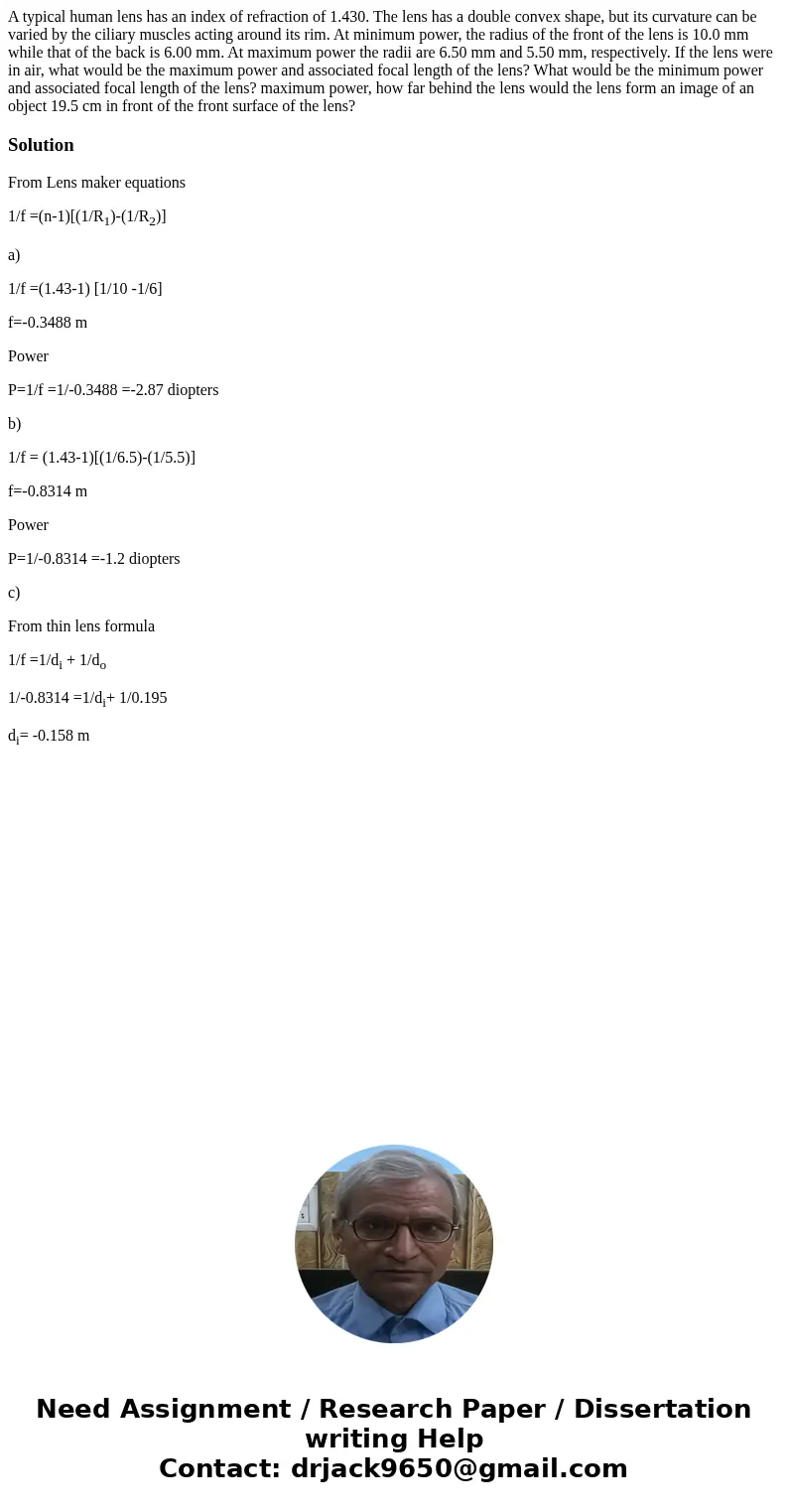A typical human lens has an index of refraction of 1430 The
A typical human lens has an index of refraction of 1.430. The lens has a double convex shape, but its curvature can be varied by the ciliary muscles acting around its rim. At minimum power, the radius of the front of the lens is 10.0 mm while that of the back is 6.00 mm. At maximum power the radii are 6.50 mm and 5.50 mm, respectively. If the lens were in air, what would be the maximum power and associated focal length of the lens? What would be the minimum power and associated focal length of the lens? maximum power, how far behind the lens would the lens form an image of an object 19.5 cm in front of the front surface of the lens? 
Solution
From Lens maker equations
1/f =(n-1)[(1/R1)-(1/R2)]
a)
1/f =(1.43-1) [1/10 -1/6]
f=-0.3488 m
Power
P=1/f =1/-0.3488 =-2.87 diopters
b)
1/f = (1.43-1)[(1/6.5)-(1/5.5)]
f=-0.8314 m
Power
P=1/-0.8314 =-1.2 diopters
c)
From thin lens formula
1/f =1/di + 1/do
1/-0.8314 =1/di+ 1/0.195
di= -0.158 m

 Homework Sourse
Homework Sourse